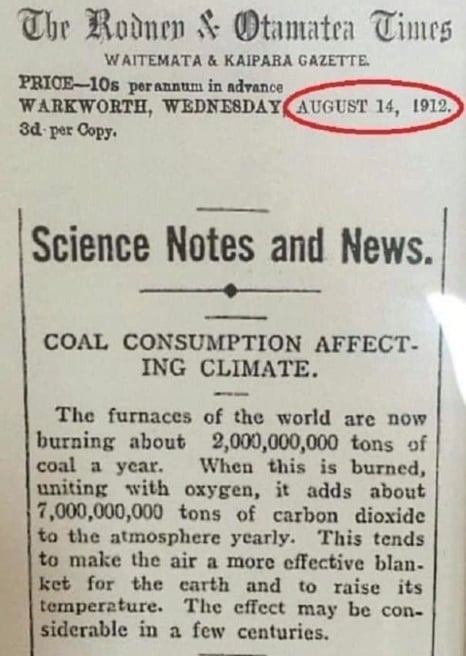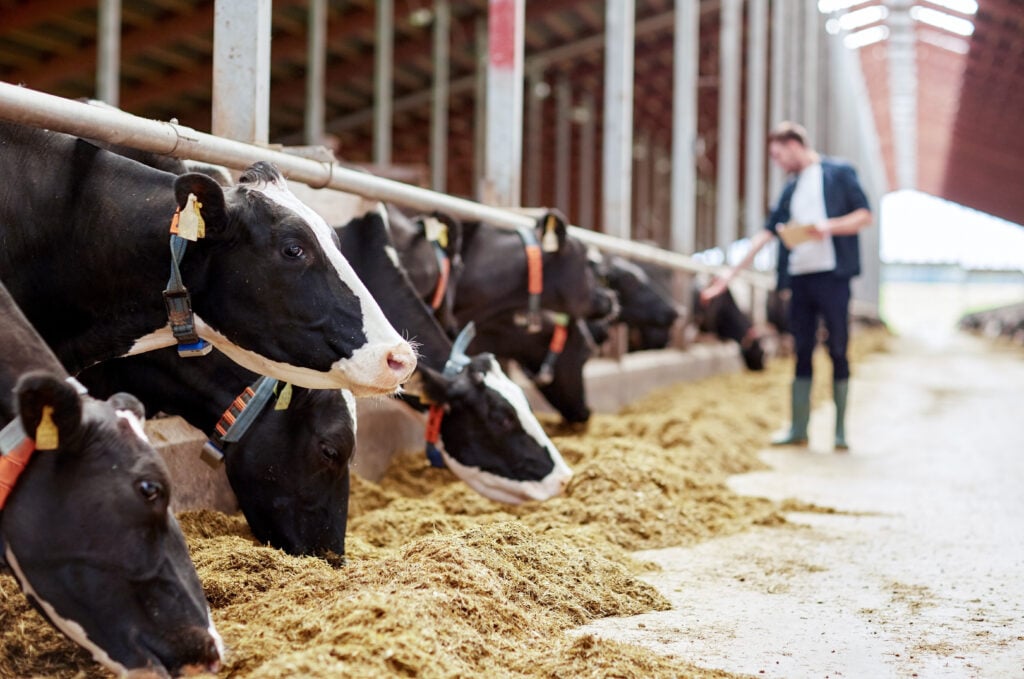On this day (August 14) in 1912, a newspaper in New Zealand (Aotearoa) published an article about the dangers that burning coal could have on the climate.
The article, which was titled “Coal consumption affecting climate,” was published by the Rodney and Otamatea Times, Waitemata and Kaipara Gazette. It reported on the fact that the earth’s atmosphere was changing due to the world’s increasing reliance on fossil fuels.
“The furnaces of the world are now burning about 2,000,000,000 tons of coal a year,” the article read. “When this is burned, uniting with oxygen, it adds about 7,000,000,000 tons of carbon dioxide to the atmosphere yearly. This tends to make the air a more effective blanket for the earth and to raise its temperature. The effect may be considerable in a few centuries.”

A history of climate crisis reporting
The article is said to have come months after a similar report from a magazine called Popular Mechanics, which was published in March 1912. The same article also appeared in an Australian newspaper called The Braidwood Dispatch and Mining Journal, on July 17, 1912.
The greenhouse effect, which the article alluded to, was proposed in 1896 by a Swedish scientist named Svante Arrhenius. It refers to the process whereby greenhouse gasses – including carbon dioxide – trap the sun’s warmth in the planet’s lower atmosphere. This process occurs naturally and regulates the earth’s temperature, but greater presence of gasses through human activity has led to a disruption of the natural process, and therefore unnatural heating of the planet.
The climate crisis in 2023
Since the Industrial Revolution in the mid 19th century, the planet has warmed by around 1.1C. In 2015, a number of countries signed up to a climate change treaty called the Paris Climate Agreement that aimed to limit warming to 1.5C beyond pre-industrial levels.
The UK, France, Denmark, Spain, and Germany all have a target of achieving net zero by 2050 in line with the agreement, but it appears that none have sufficient processes introduced by which to achieve it. According to the UN, countries around the world are not on track to reach their targets. It describes net zero as “one of the greatest challenges humankind has faced.” If countries were to have a hope of reaching their targets, they should take “bold, immediate steps towards reducing emissions now.”
The world is already seeing the effect of the climate crisis. Unprecedented wildfires have occurred in Australia, the US, and Siberia, while record-breaking heatwaves have been seen all over Europe this year. July 2023 was the hottest month ever recorded on earth, surpassing the previous record set in July 2019 by 0.3 percent. “These records have dire consequences for both people and the planet exposed to ever more frequent and intense extreme events,” said Samantha Burgess, deputy director of Copernicus.”
What causes global warming?

As mentioned previously, the burning of fossil fuels is a considerable contributor to global warming. The environmental conversation tends to focus entirely on this issue, however, often leaving out another significant contributor – animal agriculture.
Livestock farming is responsible for at least 14.5 percent of global greenhouse gas emissions. Arguably the most pressing of these is methane, which is 80 times more warming than carbon in its first 20 years in the atmosphere. It also has a much shorter half life, meaning cutting it will help us to slow global heating more quickly, giving us more time to address carbon dioxide emissions. Around a third of human-caused methane comes from farmed animals (mostly cattle).
But greenhouse gas emissions are just the start of the problem when it comes to animal agriculture. The industry is a leading cause of land use and deforestation, which causes havoc to biodiversity and removes vital carbon sinks. Around 26 percent of the world’s ice-free land is given to livestock grazing. This has been identified as a highly inefficient use of land – In the UK, for example, four million hectares is used for sheep (22 percent of the country’s farmland), but their meat makes up just one percent of calories consumed.
A report published in March 2023 found that food production alone would heat the world beyond the 1.5C limit outlined in the Paris Agreement. High-methane foods like meat, dairy, and rice were cited as the main culprits. Even if fossil fuels were eliminated entirely, researchers found that these emissions would heat the world a further 0.7C beyond the 1.1C we’ve risen already.
—
The article’s thumbnail was created with AI. Learn about our ethical usage policy here.






